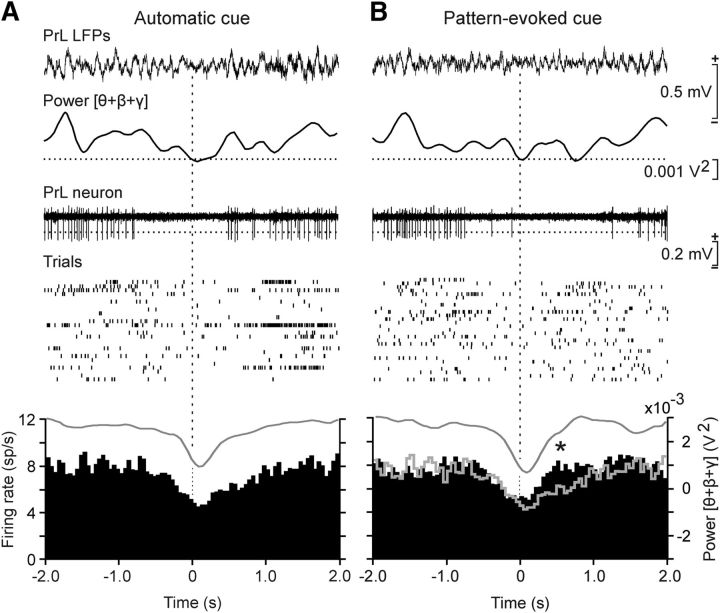Figure 6.
Unitary activity in the PrL cortex when the selected θ/β-γ transition pattern was generated spontaneously and when used to trigger touch-screen cues. A, Unitary activity recorded in the PrL cortex coincided with the spontaneous appearance of the θ/β-γ transition pattern during the automatic presentation of the visual (square virtual button) cue on the touch screen (Automatic cue). From top to bottom are illustrated a representative example of LFPs, including the presence of a θ/β-γ transition pattern, the evolution of the added spectral power for the θ + β + γ bands across the recorded LFP, the firing activity of a PrL neuron, the raster plot of ≥25 successive trials of the same neuron, and the averaged firing rate (spikes/s) of PrL pyramidal neurons recorded during the same number of spontaneous transition patterns (the gray line indicated the averaged θ + β + γ power, in V2). B, Same neurons as in A recorded during pattern-evoked cue sessions (Pattern-evoked cue). The gray line profile corresponds to the mean firing rate collected during the Automatic cue period. The statistical analysis of collected data indicated that there was a depression in the firing rate of the recorded neurons (n = 36) during the transition pattern (F(78,320,399) = 6.994, p < 0.05, 1-way ANOVA) and that this depression was recovered significantly (*t(19,0.05) = −6.552, p < 0.001, paired Student's t test) before, by the same neuronal group, during Pattern-evoked-cue trials.

